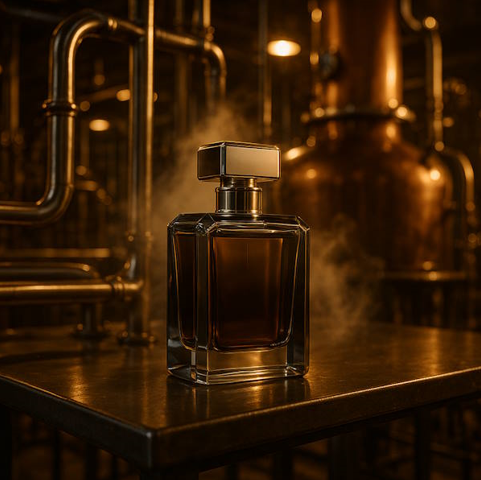Designer inspired fragrances have gained remarkable relevance in recent years. Their rise reflects changing attitudes toward scent creation and the growing value placed on craftsmanship and interpretation rather than brand prestige alone. Many contemporary creators focus on careful composition that respects traditional methods, as seen in fragrance houses such as Luxaro that emphasise thoughtful French influenced blending. This shift illustrates the new cultural space designer inspired fragrances now occupy within the wider world of perfumery.
A New Landscape of Fragrance Appreciation
Fragrance communities have expanded rapidly and have become far more informed than in previous decades. Enthusiasts now discuss note pyramids, raw materials, sillage and the impact of concentration with genuine curiosity. Reviews and shared experiences have opened a space where people appreciate the intricacies of perfumery rather than relying solely on branding. These conversations have encouraged a deeper interest in the nuanced qualities of scent including how an accord moves from bright top notes to a textured base as the hours unfold.
As this knowledge spreads the value placed on the thoughtfulness of a composition has grown stronger. People gravitate toward scents that feel balanced and expressive. Designer inspired fragrances fit naturally into this shift because they aim to interpret beloved structures while applying a fresh creative sensibility.
What Defines a Modern Designer Inspired Fragrance
Modern inspired fragrances are defined by interpretation rather than mimicry. Perfumers often take the broad silhouette of a well known composition and reshape it with new proportions, different raw materials or a contrasting emotional direction. The result feels familiar yet distinct. This approach aligns with the long standing spirit of French perfumery where tradition and innovation coexist through careful formulation and measured artistic decisions.
Craftsmanship and Raw Materials
Quality inspired fragrances rely on thoughtful material selection. Natural ingredients such as citrus oils, resins or floral absolutes can be combined with modern aroma molecules that provide lift, clarity or longevity. The way these elements interact determines the overall texture of the fragrance. Concentration adds another dimension. Eau de parfum strengths offer a steady progression on skin while richer extrait styles provide weight and depth. When these factors are balanced well the scent behaves with cohesion and grace throughout the day.
Structure and Sensory Development
Every fragrance rests on its pyramid of top, middle and base notes. The opening introduces brightness through citruses, herbs or green materials. The heart brings character through florals, spices or aromatics. The base supplies longevity with woods, musks, balsamic tones or vanilla elements. This progression tells a story that shifts gradually as volatile compounds disperse and deeper notes settle into place.
Skin chemistry influences this evolution in compelling ways. Some wearers experience amplified musks while others find that woody or resinous materials expand more strongly. Understanding these interactions helps explain why the same fragrance may feel calm on one person and luminous on another.
Families and Styles
Designer inspired fragrances span all major families. Florals may include jasmine, iris or peony interpreted with musks or soft gourmands. Woody styles often rely on cedar, vetiver or sandalwood with mineral or aromatic touches. Amber families bring warmth through resins and balsamic notes. Aromatic structures build energy with herbs and citrus. Inspired perfumery does not dilute these traditions but reimagines them in contemporary ways.
Why Designer Inspired Fragrances Appeal Today
A key reason for the growing popularity of designer inspired scents is the accessibility they provide. Complex styles once associated with high cost are now approachable for many fragrance lovers. This opens the door to building scent wardrobes that reflect mood, time of day or season. People can enjoy radiant florals for daytime, deep amber woods for evening and textured spices for transitional moments.
Performance also matters. Many modern inspired compositions use long lasting base materials or higher concentrations which often extend wear time. This reliability appeals to those who appreciate a fragrance that maintains presence from morning into the later hours.
Layering and Personal Expression
Layering has become a valued form of personal expression. People combine musks with florals to create softness or pair citrus openings with warm bases to build complexity. Designer inspired fragrances lend themselves naturally to this practice because their structures are often clear and well balanced. Their versatility allows individuals to develop combinations that feel personal and expressive.
Choosing Quality in the Inspired Fragrance Space
Identifying quality in this category involves the same considerations valued in traditional perfumery. Clear note structures, thoughtful raw material choices and transparent concentration information signal careful formulation. Many fragrance lovers find guidance by looking at a broad range of perfumes that covers every personal preference, allowing them to recognise which compositions align with their own stylistic inclinations. This awareness deepens appreciation of how materials behave as they transition from top notes to base.
The Future of Inspired Perfumery
The designer inspired fragrance movement appears poised for continued growth. Trends indicate increasing interest in niche leaning styles with layered woods, textured florals and resin infused compositions. There is also a renewed respect for traditional craftsmanship especially in regions with long histories of fragrance production. Many inspired fragrance creators now approach their work as a form of olfactory interpretation rather than replication, contributing to a more diverse and expressive perfume landscape.
Final Thoughts
Designer inspired fragrances have reshaped the cultural map of perfumery. They offer accessibility without compromising artistry and invite a deeper appreciation of composition and material quality. Their growing presence reflects a broader transformation in the way people relate to scent and affirms their place as an important and creative part of modern fragrance culture.
